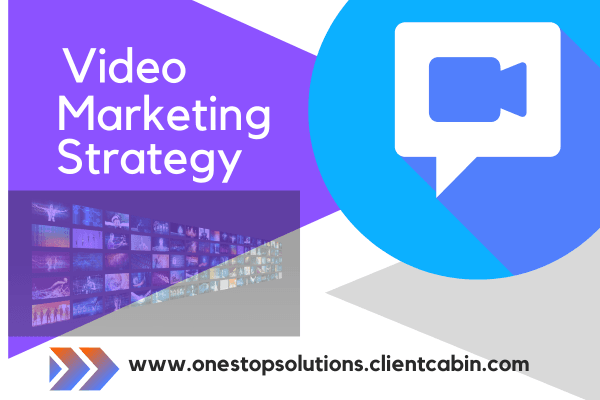Video Marketing is Essential for Modern Branding
Video marketing has emerged as a powerful tool for branding. Most importantly, it’s not just about being trendy; it’s about meeting your audience where they are. People are consuming more video content than ever before, with platforms like YouTube and TikTok leading the charge. Therefore, integrating videos into your marketing strategy is no longer optional—it’s essential.
The Power of Visual Storytelling
Visual storytelling is an art. It’s the difference between telling someone your brand’s story and showing them. Videos have the power to evoke emotions, making your brand memorable. When you craft a narrative that resonates, viewers are more likely to remember and engage with your brand.
For instance, think of the iconic “Share a Coke” campaign by Coca-Cola. It wasn’t just about the product; it was about personal connections and shared moments. Videos captured these stories, making the campaign a massive success.
Building Customer Trust and Engagement
Trust is a cornerstone of any brand’s success. Videos allow you to build that trust by showcasing authenticity. When potential customers see real people using your products or hear genuine testimonials, it breaks down barriers. They feel more connected and are more likely to engage.
Overview of Market Trends Favoring Video Content
Video content is not just a passing trend. According to recent studies, 82% of global internet traffic comes from video streaming and downloads. This shift is driven by several factors, including the increased use of mobile devices and faster internet speeds.
Moreover, social media platforms are prioritizing video content in their algorithms. This means that videos are more likely to be seen and shared compared to other types of content. Therefore, businesses that leverage video are positioning themselves for greater visibility and engagement. For more insights, check out how to build brand awareness with video marketing.
“Video marketing can increase brand awareness by 54%.” – HubSpot Research

Types of Videos to Elevate Your Brand
Not all videos are created equal. To truly elevate your brand, you need to know which types of videos will resonate with your audience and serve your objectives. Let’s explore some of the most effective formats.
Crafting Compelling Company Narratives
Every brand has a story. It might be about your humble beginnings, your mission, or the impact you’ve made. Crafting a compelling company narrative through video helps you connect on a deeper level with your audience. Share your journey, your values, and what sets you apart.
For example, a startup might create a video showcasing its founder’s story, highlighting challenges and triumphs. This not only humanizes the brand but also inspires trust and loyalty among viewers.
“A great brand story can turn casual viewers into loyal customers.” – Marketing Expert
Highlighting Product Features and Benefits
One of the best ways to showcase your products is through video demonstrations. When potential customers can see your product in action, it helps them understand its features and benefits more clearly. This type of video can significantly boost purchase intent. For more insights, check out how to build brand awareness with video marketing.
Consider a tech company launching a new gadget. A video highlighting its features, ease of use, and unique benefits can be a game-changer in convincing potential buyers to make a purchase.
Identifying Key Brand Messages and Stories
Every brand has a unique message and story to tell. Identifying these key elements is the first step in crafting impactful video content. Start by asking yourself: What is the core message I want to convey? What stories reflect my brand’s values and mission? Once you have these answers, you can begin to weave them into your video narratives, ensuring that each piece of content aligns with your brand identity.
Choosing the Right Platforms for Distribution
Choosing the right platform is crucial for reaching your target audience effectively. Different platforms cater to different demographics and types of content. For instance, YouTube is ideal for long-form content and tutorials, while TikTok and Instagram are perfect for short, engaging clips. Consider where your audience spends their time and tailor your distribution strategy accordingly.
Moreover, cross-platform promotion can amplify your reach. Sharing snippets of a YouTube video on Instagram or a TikTok teaser on Facebook can drive traffic and increase engagement across all channels. Therefore, understanding the strengths of each platform is key to maximizing your video’s impact.
Optimizing Video Length and Format for Engagement
Video length and format play a significant role in capturing and retaining viewer attention. Generally, shorter videos (under two minutes) perform better in terms of engagement, especially on social media. However, for more complex topics or in-depth tutorials, longer formats may be necessary.
Besides length, consider the format that best suits your message. Whether it’s a live stream, animation, or a traditional video, each format offers unique advantages. Testing different formats can help you determine what resonates best with your audience.
Incorporating User-Generated Content
User-generated content (UGC) is a powerful way to build authenticity and trust. Encouraging your customers to share their experiences with your products can provide valuable social proof. This content can then be integrated into your marketing strategy, showcasing real-life testimonials and building community around your brand.
For instance, a skincare brand might encourage customers to share their before-and-after photos or video reviews. Not only does this provide genuine endorsements, but it also fosters a sense of community and loyalty among your audience.
The Impact of Videos on Social Media Engagement
Videos are a driving force behind social media engagement. They are inherently more engaging than static images or text, capturing attention quickly and compelling viewers to interact. This is why platforms like Instagram and Facebook prioritize video content in their algorithms, often resulting in higher reach and engagement rates.
Increasing Social Shares and Visibility
Social shares are a key indicator of a video’s success. When viewers share your video, it extends your reach beyond your immediate audience, introducing your brand to new potential customers. To encourage sharing, create content that resonates emotionally, entertains, or provides value.
Adding clear calls-to-action (CTAs) can also drive shares. Phrases like “Share with a friend who needs this” or “Tag someone who can relate” can prompt viewers to spread your content further.
Strategies for Leveraging Platforms like YouTube and TikTok
YouTube and TikTok are powerhouses for video content, each offering unique opportunities. YouTube’s searchability and longevity make it ideal for evergreen content, tutorials, and in-depth storytelling. Optimize your YouTube videos with SEO-friendly titles and descriptions to increase discoverability.
On the other hand, TikTok thrives on trends and creativity. Short, snappy, and visually appealing content performs well here. Participating in trending challenges or using popular music can boost your visibility and engagement on TikTok.
Using Instagram and Facebook Videos for Enhanced Reach
Instagram and Facebook offer various video formats, including Stories, Reels, and Live videos, each with its own benefits. Instagram Stories and Reels are perfect for quick, engaging content that keeps your audience coming back for more. Facebook Live, meanwhile, allows for real-time interaction, fostering a deeper connection with your audience.
To maximize reach, make use of hashtags and location tags, and encourage interaction through polls, questions, and comments. This not only boosts engagement but also increases the chances of your content being seen by a wider audience. For more strategies, explore how to build brand awareness with video marketing.
Measuring Success and Impact of Video Campaigns
Measuring the success of your video campaigns is crucial for refining your strategy and maximizing ROI. By analyzing key metrics, you can gain insights into what’s working and where there’s room for improvement. For more detailed guidance, check out how to build brand awareness with video marketing.
Setting Clear Objectives and Key Performance Indicators (KPIs)
Before launching a video campaign, set clear objectives and KPIs. Are you aiming to increase brand awareness, drive traffic, or boost sales? Your objectives will guide your strategy and help you determine which metrics to focus on.
Common KPIs for video campaigns include views, engagement rate, click-through rate, and conversion rate. By tracking these metrics, you can assess the effectiveness of your videos and make data-driven decisions.
Additionally, consider using A/B testing to compare different versions of your video content. This can provide valuable insights into what resonates most with your audience.
Analyzing Viewer Engagement and Conversion Rates
Engagement metrics, such as likes, comments, and shares, provide insight into how well your video resonates with your audience. High engagement rates indicate that your content is striking a chord and prompting viewers to interact.
Conversion rates, on the other hand, measure how effectively your video drives viewers to take a desired action, such as signing up for a newsletter or making a purchase. Tracking these metrics helps you understand the direct impact of your videos on your business goals.
Adjusting Strategies Based on Data Insights
Data insights are invaluable for refining your video strategy. If certain types of content or formats perform better than others, focus your efforts on those areas. Likewise, if a particular platform yields higher engagement, consider allocating more resources there. For more insights, check out this essential guide to video marketing.
Regularly reviewing your video performance and adjusting your strategy accordingly ensures that your efforts remain effective and aligned with your objectives. Remember, the digital landscape is constantly evolving, so staying agile and responsive to data is key to long-term success.
Case Studies: Successful Video Branding Examples
Learning from successful brands can provide valuable insights into effective video marketing strategies. Let’s explore some real-world examples that highlight the power of video in branding.
One notable example is Dollar Shave Club. Their launch video, featuring a humorous take on why their razors are great, went viral. It perfectly encapsulated their brand’s personality and value proposition, leading to a massive increase in subscribers and brand awareness.
Another example is GoPro, which uses user-generated content to showcase their products. By sharing videos of adventurous users capturing thrilling moments, GoPro effectively demonstrates the capabilities of their cameras and builds a community of engaged users.
A Look at Leading Brands and Their Tactics
“Dollar Shave Club’s viral video generated 12,000 orders in the first 48 hours.” – Business Insider
These brands succeeded by aligning their video content with their brand’s core message and values. Dollar Shave Club used humor and relatability, while GoPro leveraged community and adventure. Both brands understood their audience and crafted videos that resonated deeply.
By focusing on authenticity and storytelling, these brands created content that was not only engaging but also shareable. This approach helped them reach a wider audience and solidify their brand presence.
These examples demonstrate the importance of understanding your brand’s unique selling points and crafting video content that highlights these aspects effectively.
Lessons Learned and Applied Successes
From these case studies, we learn that successful video branding requires a deep understanding of your audience and a clear brand message. Videos should be authentic, engaging, and aligned with your brand’s values. For further insights, explore how to build brand awareness with video marketing.
Moreover, leveraging user-generated content can enhance authenticity and foster a sense of community. Encouraging your customers to share their experiences can provide valuable social proof and strengthen brand loyalty.
Taking the Next Step in Video Branding
Now that you have insights into the power of video branding, it’s time to take the next step. Crafting a long-term video strategy is essential for sustained success and growth.
Start by defining your goals and objectives. What do you want to achieve with your video content? Whether it’s increasing brand awareness, driving sales, or building community, having clear goals will guide your strategy. For more insights, check out this guide on building brand awareness with video marketing.
- Identify your target audience and understand their preferences.
- Choose the right platforms for distribution based on your audience’s habits.
- Create a content calendar to plan and schedule your videos.
- Allocate resources for production, including budget and talent.
Consistency is key. Regularly producing and sharing high-quality video content will keep your audience engaged and your brand top of mind.
Crafting a Long-Term Video Strategy
To craft a successful long-term video strategy, start by analyzing your current video content and identifying areas for improvement. What types of videos have performed well? What feedback have you received from your audience?
Based on this analysis, set specific, measurable goals for your video campaigns. Consider using SMART goals (Specific, Measurable, Achievable, Relevant, Time-bound) to ensure clarity and focus.
Next, outline a content plan that aligns with your brand’s message and objectives. This plan should include a mix of video types, such as brand stories, product demos, and user-generated content, to keep your audience engaged and interested.
Integrating Video Marketing with Overall Branding Efforts
Video marketing should not exist in isolation. It should be integrated with your overall branding efforts to create a cohesive and unified brand identity. Ensure that your video content aligns with your brand’s voice, messaging, and visual identity.
Collaborate with other marketing teams to ensure consistency across all channels. This includes aligning your video content with social media, email marketing, and website strategies.
Frequently Asked Questions On Video Marketing
Addressing common questions can provide clarity and guidance for those looking to enhance their video marketing efforts.
What makes a video engaging to viewers?
An engaging video captures attention quickly, tells a compelling story, and evokes emotions. It should be visually appealing, with high-quality visuals and sound. Including a clear call-to-action encourages viewers to interact and engage further.
Additionally, videos that provide value, whether through entertainment, education, or inspiration, tend to resonate more with viewers.
How can small businesses effectively use video marketing?
Small businesses can leverage video marketing by focusing on authenticity and storytelling. Share behind-the-scenes glimpses, customer testimonials, and product demos to build trust and connection with your audience.
Utilize cost-effective tools and platforms, such as smartphone cameras and social media, to create and distribute content. Consistency and creativity are key to standing out and making an impact.
What budget should be allocated for video production?
The budget for video production can vary widely based on factors like complexity, duration, and quality. For small businesses, a budget of $500 to $5,000 per video is common, covering aspects like equipment, editing, and talent.
Consider starting with a modest budget and scaling up as you see positive results and return on investment.
How do I measure the ROI of my video marketing efforts?
To measure ROI, track key performance indicators (KPIs) such as views, engagement, click-through rates, and conversions. Analyze these metrics in relation to your goals to assess the effectiveness of your video campaigns.
Additionally, consider using analytics tools and platforms to gain deeper insights into viewer behavior and preferences.
Which video platform is the best for brand awareness?
The best platform for brand awareness depends on your target audience and content type. YouTube is ideal for long-form content and discoverability, while TikTok and Instagram are great for short, engaging clips.
Consider your audience’s preferences and habits when choosing the right platform to maximize reach and impact.
Videos have become an essential tool for businesses looking to enhance their brand perception. By leveraging engaging video content, companies can effectively communicate their values, showcase their products, and connect with their audience on a deeper level. For those interested in exploring this further, check out this guide on building brand awareness with video marketing.
Key Takeaways to Amplify Your Brand with Videos
- Incorporating videos can increase brand awareness by up to 54%.
- Storytelling through video helps create emotional connections with your audience.
- Product demos and how-to videos can boost purchase intent by 73%.
- Social media platforms like YouTube and TikTok are essential for video distribution.
- Analyzing video performance metrics helps refine and optimize your strategy.

If there’s one thing successful brands have in common, it’s their ability to harness the power of multichannel organic traffic, and especially from captivating videos. Every channel offers unique opportunities to connect with your audience. Video marketing however, can significantly boost brand awareness, improve viewer engagement, and drive sales by leveraging the power of visual storytelling.
But knowing where to start can feel overwhelming. That’s why OneStopSolutions is fully equipppedd and well experienced to demystify the process. Learn directly from experts who have helped countless businesses scale their organic reach using innovative distribution techniques.
